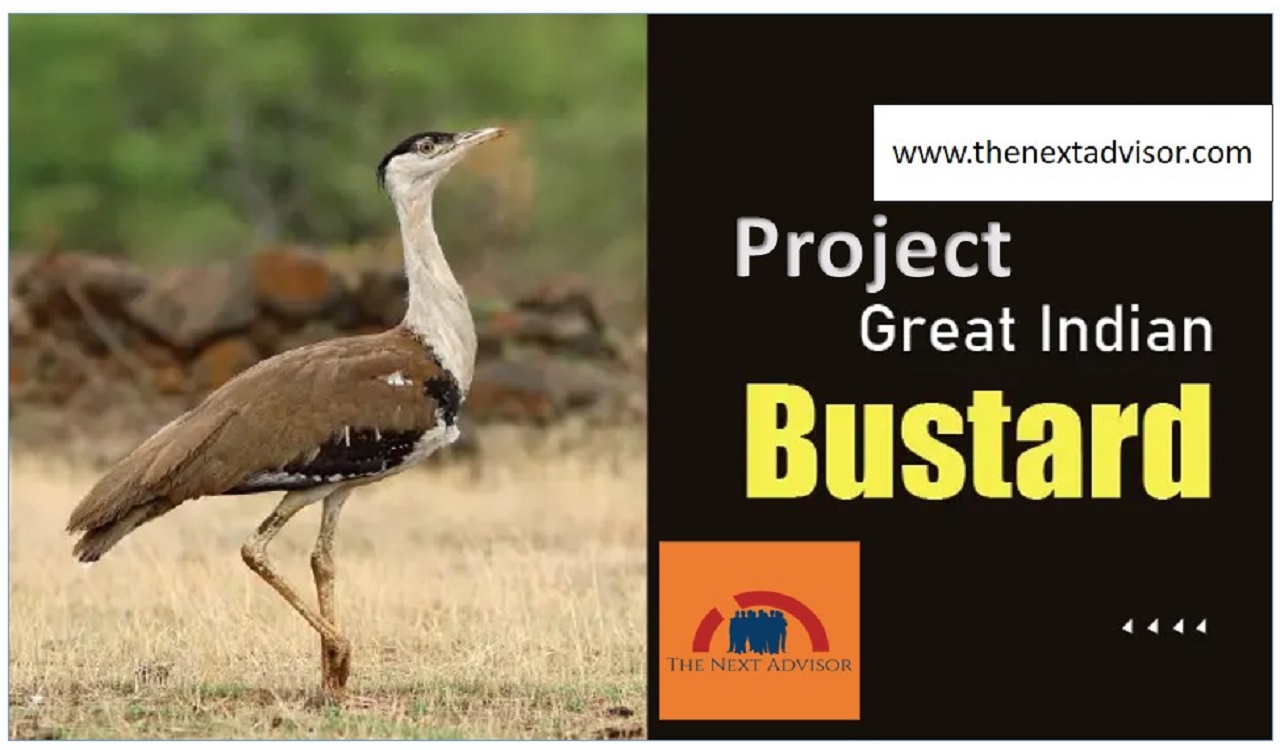Project Great Indian Bustar
Supreme Court seeks government’s response on evolving ” Project Great Indian Bustar”. conservation program. The news – Recently, the Supreme Court asked the Government of India, whether a focused approach, something like project tiger can be taken up for saving the critically endangered Indian Buster Act. GIB – The Great Indian Bustard is a large and mostly terrestrial bird that is found in India and the adjoining regions of Pakistan. GIB is a large bird with long legs, which looks very much like an Ostrich.
It is among the heaviest of the flying birds. The Great Indian Bustard is a larger cursorial bird with a long neck and long bare legs, it stands at about a meter. Males have a well-developed throat pouch right below which helps in producing the deep resonant booming that attracts females that can be heard up to a distance. The Great Indian Bustard is a large and mostly terrestrial bird that is found in India and the adjoining regions of Pakistan. GIB is a large bird with long legs, which looks very much like an Ostrich It is among the heaviest of flying birds.
The males are is about 1.1 – 1.20 m in body weight ranging between 8 – 18 kg. The female is smaller in comparison. The Great Indian Buster breeds between march and September when the fluffy white feathers of the male are inflated and displayed. Territorial fights between males involve strutting next to each other, leaping against each other with legs, and landing down to lack the opponent’s head under their neck. GIBs prefer open, grassy plains for besting, routing, breeding display, and foraging.
GIBs are devoid of preen glands that secrete and cannot oil their feathers. Instead, it is covered down feathers, which produce dust feathers to make them more waterproof and bathing helps to keep the feathers clean. GIBs prefer open, grassy plains for nesting, roosting, breeding display, and foraging. Devoid of preen glands that secrete oil and hence oil its feathers. Instead, it is covered with powder, which produces dust that acts on the waterproof and along with dust bathing helps to keep the feathers clean.
The great Indian Buster is largely a silent bird, but when threatened produces a barking sound ‘hooky’ therefore it is also known as ‘ Hookna’ in some parts of North India. It is known in some other parts as Gaganbher or Hoom or Godawan or Gurayin or Charcoal.
Status of GIB – In India, the bird was historically found in Punjab, Hariyana, Uttar Pradesh, Maharastra, Karnataka, and Tamil Nadu. Today the GIB is restricted to isolated pockets in Telangana, Andhra Pradesh, Rajasthan, etc.
Why the numbers are declining?
1. Loss of habitat.
2. Poaching.
3. Electricity lines.
4. Cross Border migration.
5. Eucalyptus plantations.
Steps Taken –
Critically endangered IUCN.
CITES.
CMS.
WILDLIFE PROTECTION ACT.

























